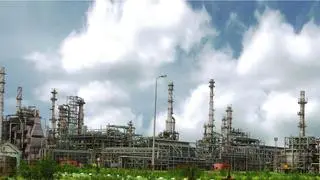Led by steel firms, India Inc is likely to double its revenue growth in the second quarter of fiscal 2019, primarily due to the base effect, said a report.
Corporates are set to log in 12.1 per cent topline growth in the September quarter, up from 6.4 per cent in the same period in the last fiscal year, as steel makers are set to clock higher margins of 80 basis points (bps), rating agency Crisil said in its report on Thursday. On the flipside, the report said cost pressure is clearly rising across the board.
It said aggregate operating margins would be up 5-10 bps in the second quarter, but this would be primarily due to the performance of steel-makers, adding that barring steel, the number is down by around 70 bps.
“If cost pressures continue to rise, the gradual ascent in operating margins seen from the fourth quarter of the last fiscal can reverse,” the agency said, based on its reading of 365 companies, which excludes banking, financial services and insurance, and oil companies. These 365 companies account for about 65 per cent of the market capitalisation of the NSE.
According to Prasad Koparkar, a senior director at Crisil, demand recovery is expected to be driven by discretionary, consumption-led sectors such as airlines, automobiles, fast-moving consumer goods (FMCG) and retail.
“While automobiles are expected to see an 18 per cent sales growth, airlines should see passenger traffic rise 16 per cent year-on-year,” he said.
Retail, FMCG and automobiles will benefit from the low-base effect caused by the roll-out of GST in July last year, Koparkar said, adding makers of steel and aluminium, and coal miners will benefit from improved sales, while cement companies will be helped by higher volumes.
Investment-linked sectors such as housing and capital goods have also been supportive because of public spending, according to him. Higher crude prices and the falling rupee are also skewing the input cost math for companies.
Crude is up 45 per cent year-on-year, while the rupee, which fell 4 per cent in the first quarter, has lost 9 per cent more in the second quarter, he said.
Rahul Prithiani, a director at the agency, said, “Oil and the rupee will impact the cost structures of most sectors. Additionally, domestic prices of coal, long steel, flat steel and aluminium are expected to rise 15, 14, 17 and 12 per cent, respectively. That would add to the cost pressure for end-use sectors.”
Airlines, automobiles, aluminium and cement companies will be the sectors bearing the brunt of the rising cost of raw materials, according to the report.
However, margins for steel are expected to improve significantly due to an uptick in realisations, it said, adding conversely, the rupee fall will prop up revenue growth for export-linked sectors, especially IT and pharma.







Comments
Comments have to be in English, and in full sentences. They cannot be abusive or personal. Please abide by our community guidelines for posting your comments.
We have migrated to a new commenting platform. If you are already a registered user of TheHindu Businessline and logged in, you may continue to engage with our articles. If you do not have an account please register and login to post comments. Users can access their older comments by logging into their accounts on Vuukle.